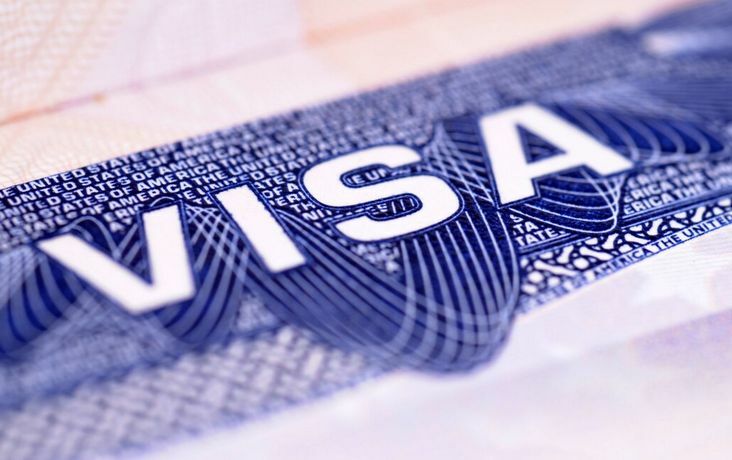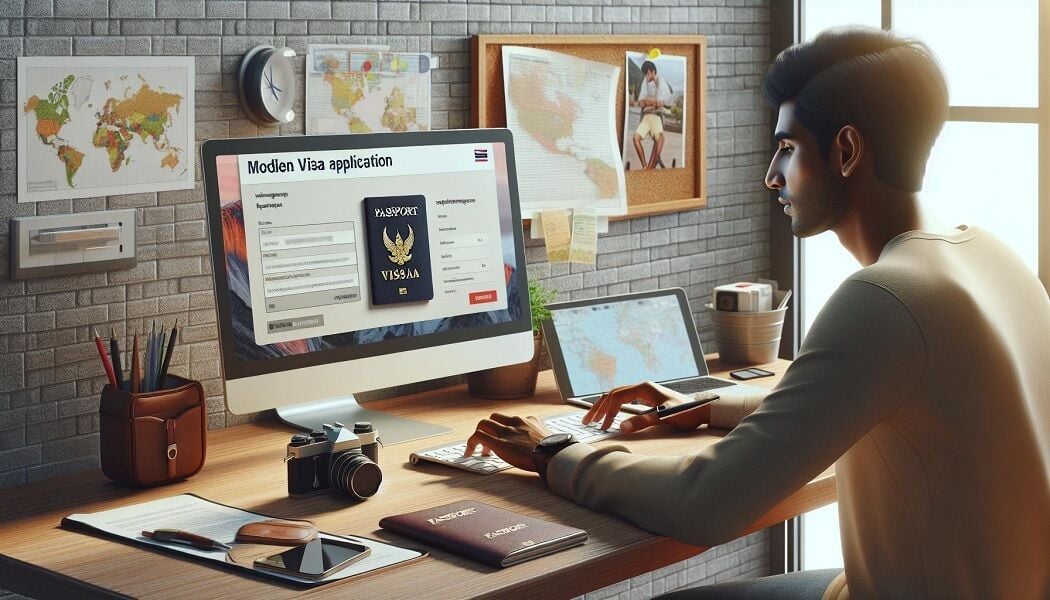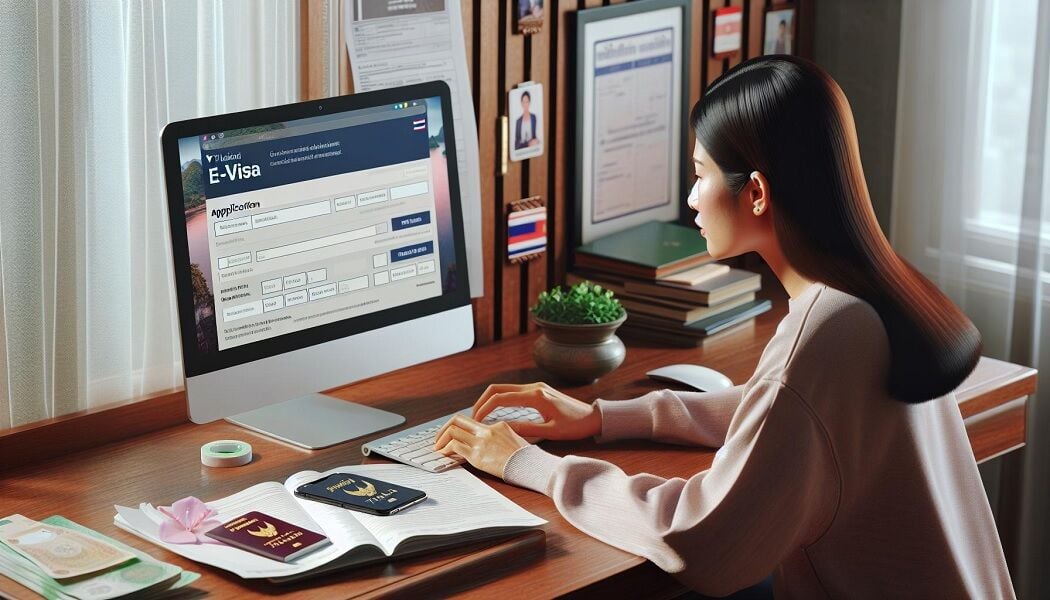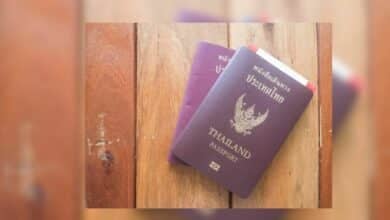Thailand visa guide: Electronic vs physical applications explained

The visa application process for Thailand, whether for short-term visits or extended stays, constitutes a multifaceted terrain necessitating meticulous navigation. The launch of electronic visas in November 2021 for Dutch and Belgian passport holders marks a pivotal shift towards digitisation, providing an efficient substitute to the conventional embassy application methodology. This evolution reflects a wider movement towards the digitisation of travel documentation procedures, emphasising the imperative for travellers to familiarise themselves with both digital and traditional application approaches.
Individuals deliberating between submitting an electronic application and visiting an embassy in person are confronted with a common predicament among international travellers. This decision often hinges on various factors, including airline regulations or specific visa categories such as the Thailand SMART Visa. Each pathway entails distinct steps, requirements, and considerations designed to accommodate diverse needs and circumstances.
This article serves to elucidate the Thai visa application process by providing authoritative advice on both electronic and in-person applications. It furnishes readers with critical updates on the latest visa options available, thereby facilitating an informed choice that complements their travel objectives and logistical requirements. Through a detailed exploration of this subject matter, this guide aims to equip prospective visitors to Thailand with the necessary information for a seamless travel preparation experience.
Types of visas for Thailand
Navigating the options for obtaining a visa for Thailand requires understanding the various types available. Whether you’re applying visa physically or electronically in Thailand, it’s crucial to select the appropriate category based on your travel or long-term stay plans.

Single-entry tourist visa
A Single Entry Tourist Visa offers a straightforward approach for travellers planning a one-time visit. Valid for 60 days, this visa caters to those visiting for tourism, leisure, or medical reasons. With a 3-month validity from the approval date, applicants have ample time to enter Thailand. Extensions are possible, allowing an additional 30-day stay upon visiting a Thai Immigration Office. This option simplifies travel plans, ensuring a smooth process for tourists.
Multiple entry tourist visa
For more frequent visitors, the Multiple Entry Tourist Visa ensures flexibility. This visa permits unlimited entries over 6 months, appealing to tourists and those with medical purposes in mind. It’s an ideal choice for travellers seeking to explore Thailand in depth or those needing repeated entry for health care.
Long-stay visas
Long-stay visas cater to individuals planning extended periods in Thailand. These encompass the Non-Immigrant Visa types such as OA (Long Stay) or OX (Long Stay for emigrants), with validity extending up to a year for certain types. Designed for those aged 50 and above, retirees, or those emigrating, these visas facilitate longer dwellings, embracing Thailand’s culture and lifestyle.
Special categories: business, medical, student, and diplomatic visas
Special categories address specific needs. Business Visas (B, B-A, IB) support those with a valid work permit, whereas Medical Visas (Non-Immigrant O) are for longer-term medical treatments. Student Visas (Non-Immigrant ED) serve non-Thai passport holders enrolled in recognised institutions. Diplomatic Visas (F) accommodate diplomats, ensuring a wide range of purposes are covered under Thailand’s visa framework. Each category has defined criteria, ensuring applicants are matched with the right visa for their circumstances.
Understanding these options and whether to apply visa physically or electronically in Thailand assists in planning your trip or moving smoothly, making sure you select the visa that best fits your needs.
Choosing between physical and electronic visa applications

Pros and cons of physical visa applications
Opting to apply for a visa in person means popping into a Thai embassy or consulate. It’s the classic way that offers a personal touch. This method is great because it lets you get immediate answers and sort out any little application glitches right there and then. But, just so you know, this path does ask for a chunk of your time to visit the embassy, which might be a bit of a hassle depending on where you live and your work schedule. Plus, getting there might cost you in travel bucks, and if you’re coming from far away, you might need to think about where to stay overnight.
Pros and cons of electronic visa applications
Choosing to submit your visa application through electronic means provides a notable advantage in terms of convenience and flexibility. Applicants have the liberty to file their applications from any location, at any time, eliminating the necessity of physical visits to an embassy or consulate. This efficiency not only conserves time but also diminishes travel expenses. Digital submissions are generally processed swiftly, rendering them suitable for urgent travel arrangements. Nevertheless, potential challenges such as website malfunctions or the absence of direct assistance may arise. Errors committed during the submission process could result in delays or denial of the application, frequently without the chance for prompt rectification.
Eligibility for E-visa application
Applying for your Electronic Visa (E-Visa) to visit the beautiful country of Thailand is pretty straightforward, but let’s not forget a couple of key points! Firstly, depending on where your passport is from can make quite a difference because Thailand offers special e-visa arrangements with certain countries. So, it’s a smart move to pop over to Thai immigration’s official website now and then just to double-check that you’re all set. Also, having your passport ready and meeting all the necessary criteria for an E-Visa application is super important. Plus, choosing the right visa category that fits perfectly with your plans in Thailand will help ensure your application sails through without a hitch. Just a little heads-up: paying attention to detail during this process goes a long way.
How to apply for an E-visa to Thailand

Registration and documentation
Ready to kickstart your Thai adventure with an e-visa? First things first, pop over to the official Thai e-visa website and sign yourself up. You’ll just need your email and to pick a password – easy peasy! Once you’re all set up, grab your passport (make sure it’s good for six months past your trip) and a recent photo of yourself that fits their guidelines. Depending on which visa you’re going for, you might also need to show your flight and hotel bookings. All this prep is your ticket to diving into Thailand’s amazing culture. Can’t wait for you to experience it.
Payment and processing time
Upon the successful upload of all requisite documents, the subsequent phase entails remitting payment for the visa application fee. The cost is contingent upon the category of visa, commencing at 30 Euro for a Transit Visa and escalating to 175 Euro for specific categories of Non-Immigrant Visas. It is imperative to acknowledge that certain debit/credit card issuers may levy additional service charges throughout the online payment procedure. The Royal Thai Embassy disclaims any responsibility for these ancillary fees.
Upon successful transaction, the status of your application will be updated to ‘processing’. The duration for processing generally spans from 3 to 7 business days. Nevertheless, this timeframe may fluctuate based on the thoroughness and nature of the documents provided, the particular visa classification, and the applicant’s nationality. Applications that are not fully completed or lack necessary documentation may experience delays in processing.
Email notifications and receiving your visa
Throughout the e-visa application procedure, applicants shall be apprised of their application’s status via email notifications. Such communications will inform them of any inconsistencies or further details needed. Following the approval of the e-visa, an email will be sent with an attachment encompassing the e-visa itself. This document must be printed and shown upon entry into Thailand. Remember, having your e-visa checked upon arrival is a crucial step, as immigration officers will verify its validity at airports or border crossings in Thailand. Ensuring your application is accurate and complete is the key to a smooth travel experience to Thailand.
Physical visa application process
Choosing between submitting a visa application online or proceeding with an in-person visit to the embassy represents a critical decision. The digital method offers undeniable convenience and efficiency, yet the conventional approach still holds value. For applicants who prefer tangible interactions or require visas unavailable through electronic platforms, an embassy visit provides direct communication and immediate assistance. It is essential, whether opting for the digital ease of an e-visa or the personal interaction of an in-person application, to ensure the accuracy and completeness of all documentation. Such meticulousness will not only streamline the application process but also contribute to a seamless travel experience in Thailand. Irrespective of the selected method, applicants are on their path towards immersing themselves in the rich culture and breathtaking landscapes of this distinguished country.
General tips for successful visa application
Plan ahead: Begin your visa application well before your trip, particularly if you choose the physical method. Since processing times can vary, account for this to avoid last-minute issues.
Choose the right visa: Thailand provides a variety of visas tailored to different needs. Carefully research and choose the visa category that best matches your travel purpose, whether it’s tourism, business, volunteering, etc. Refer to our previous section on visa types for guidance.
Accuracy is key: Ensure all information on your application form is accurate. Typos or inconsistencies can cause delays or even result in application rejection.
Tips for successful physical visa application
Appointment considerations: Some embassies or consulates may require appointments for visa submissions. Check their websites or inquire in advance to avoid unnecessary trips.
Clear communication: Clearly communicate your purpose for visiting Thailand when interacting with embassy or consulate staff. This facilitates a smoother application process.
Patience is key: The physical application process may involve waiting periods. Maintain patience and courtesy with embassy or consulate staff.
Tips for successful electronic visa application
Eligibility check: Before embarking on the e-visa application, verify your nationality is included in the Thai e-visa program. You can find this information on the official e-visa website.
Stable internet connection: Ensure a reliable internet connection throughout the application process. Uploading documents and submitting the application can be frustrating with an unstable connection.
Technical glitches: While rare, technical glitches can occur on any website. Be prepared to potentially re-enter information if necessary. Save copies of all uploaded documents for your records.
Embarking on a journey to the Schengen Area from Thailand requires careful planning. This ultimate guide simplifies the Schengen visa application process for Thai residents, highlighting essential steps, documentation, and tips to ensure a successful application. Navigate through the complexities of obtaining your Schengen visa with ease and confidence.

































